Elke vijf jaar staat de kunstwereld op zijn kop. Dan is het tijd voor de veertiende Documenta. Op dat moment verandert de Duitse stad Kassel in een waar Mekka voor kunstkenners en kunstliefhebbers, snobs en connaisseurs. En natuurlijk toeristen op zoek naar die andere Efteling. Dit jaar heeft de Documenta een flinke Nederlandse inbreng. Maar er is meer: voor het eerst sinds 1955 begint de Documenta niet in Kassel, maar in Athene.
Ik ging er in het openingsweekend heen om te zien wat er nu al onmisbaar is. Ik ging ook om erachter te komen waarom je deze unieke Griekse editie niet zou moeten missen. Of, om in de stijl van de kunstmanifestatie te blijven: te zien wat er te leren valt van Athene, anders dan Dijsselbloems ‘drank en vrouwen’.
‘Nederlandse’ leiding
Met de benoeming van de Pool Adam Szymczyk (1970), in 2013, als artistiek directeur voor Documenta 14 werd een nieuw avontuur voor de huidige editie ingeleid. Voor het eerst werd een Oost-Europeaan op deze post benoemd. Met tevens een klein succesje voor Nederland, want Szymczyk is opgeleid in Amsterdam. Hij nam deel aan het Curatorial Program van de Amsterdamse presentatieplek De Appel. Szymczyk ontpopte zich als tovenaarsleerling en was tot aan zijn benoeming als Artistiek directeur van Documenta 14 directeur van de ‘Kunsthalle Basel’

Wegdromen in gekwaak
De 24 kanaals geluidsinstallatie van Benjamin “Ben” Patterson, “When Elephants fight, It Is the Frogs that Suffer (2016) is gebouwd rondom een kunstmatig stromend beekje in de tuinen van het Byzantijns Christelijk Museum. Ben Patterson was een van de ‘founding fathers’ van Fluxus en is helaas recent, in de zomer van 2016 overleden. Zijn laatste werk werd gemaakt voor Documenta 14 is een verademing in lichtvoetige kritiek.
Het hoofdgebouw van het Byzantijns Christelijk Museum is de voormalige Villa Ilissia, winterpaleis van Sophie de Marbois-Lebrun, Hertogin van Plaisance (1785- 1854). De in Philadalphia (VS) geboren Sophie was ‘Hellenophile’ en besloot in 1837 in Athene te gaan wonen. De aan het huis grenzende tuinen liepen tot aan de oevers van de rivier Ilisos. Het drassige gebied werd in de vijfde eeuw voor Christus, ‘Kikker Eiland’ genoemd.
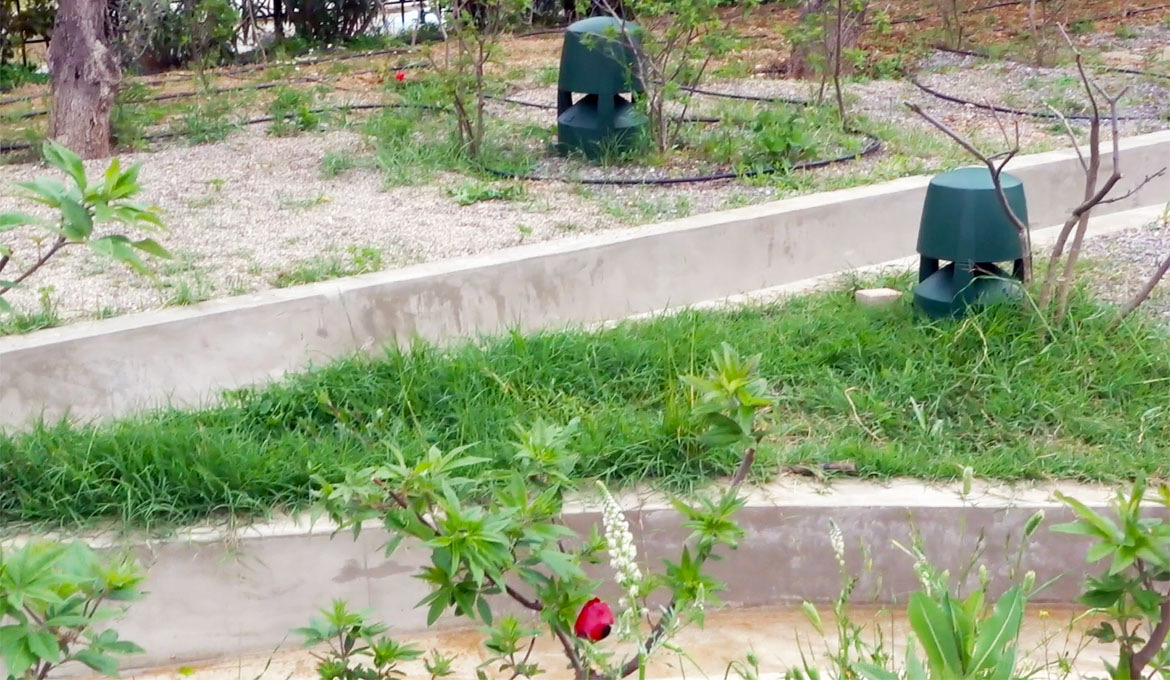
De rivier Ilisos is nog slechts op oude etsen te zien. De op deze plek geplaatste installatie met net aangeplante begroeiing en een in beton gekanaliseerd kunstmatig stroompje, werkt als een ‘tijdmachine’. Door het afwisselend laten horen van kwakende kikkers en delen uit politieke redevoeringen en gefluisterde vertellingen die verwaaien in de wind, wordt je verbeelding aangesproken. De begroeiing moet nog wat vorm krijgen, maar zelfs zo is het helemaal Fluxus en voert het je gedachten mee met de loop van het water.

Zoek de Eva Braun in jezelf
In de dependance van het Benaki museum aan de Pireos straat, toont Roee Rosen “Live and Die as Eva Braun”, 1995–97. In een strakke opstelling wordt een plot getoond voor een meeslepende (niet uitgevoerde) Virtual Reality-ervaring. Je ziet 10 scènes, gedrukt op tien zwarte banners en begeleid met zwart omlijste, zwart-wit illustraties op papier. Het vormt samen een geleide fantasie waarin je je mogelijk identificeert met het eenvoudige en weemoedige karakter van Eva Braun. Hoe kom je in zo’n situatie klaar met je leven?
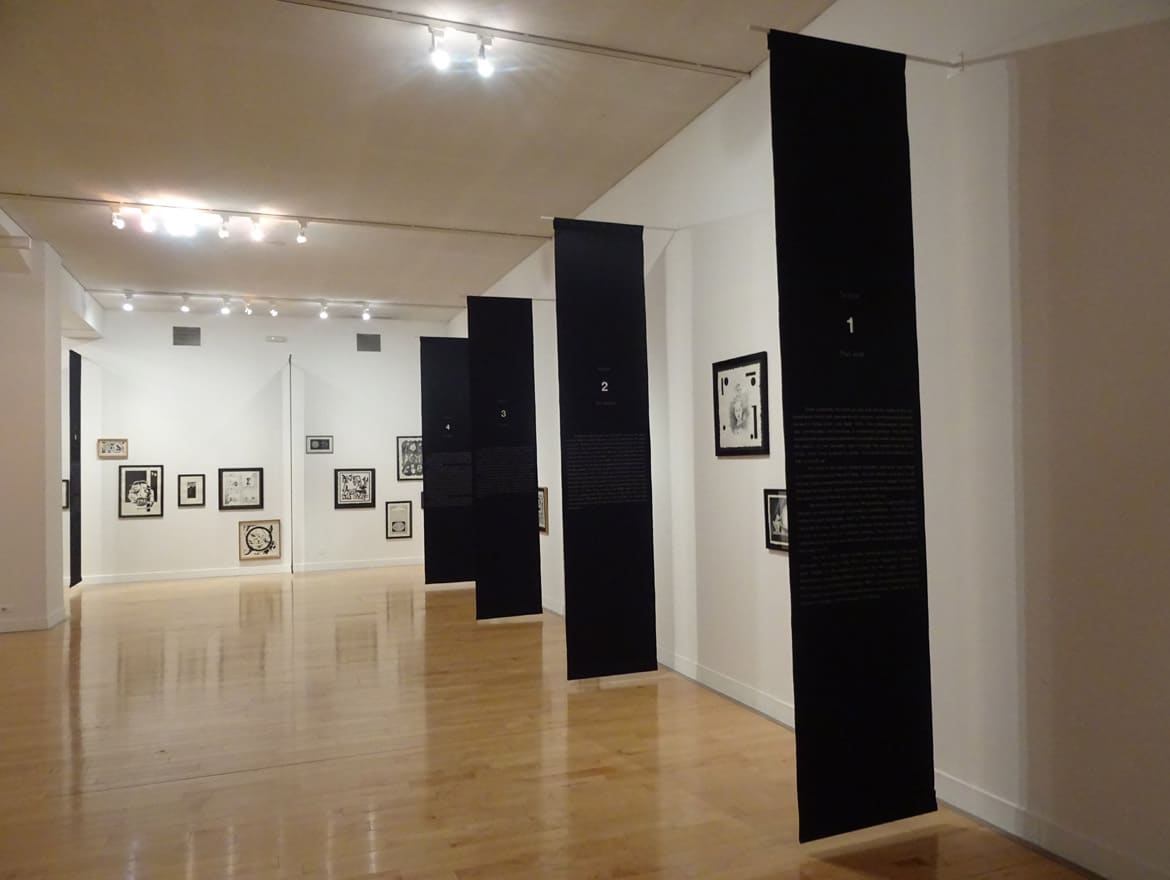
Psychotechnische parameters van een illegaal huis
Andreas Angelidakis toont zijn werk op de eerste verdieping op de Polytechneiou 8. Het is een multimediale installatie waarin hij ‘psychotechnische parameters’ onderzoekt van de architectuur en de ontwikkelingen in en van de lokale bouwwijze. In schemerdonker spelen talloze video’s. Samen met gevonden voorwerpen vormt het een onordelijk, maar aansprekend beeld. Een sfeer waarin een blijmoedige levensvisie wordt getoond van de jaren zeventig van na de val van het Kolonelsregime. In een andere kamer zien we de analyse van het model van ‘het illegale woonhuis’, dat met zijn de kenmerkende architectuur het aanzicht van de buitenwijken bepaalde.
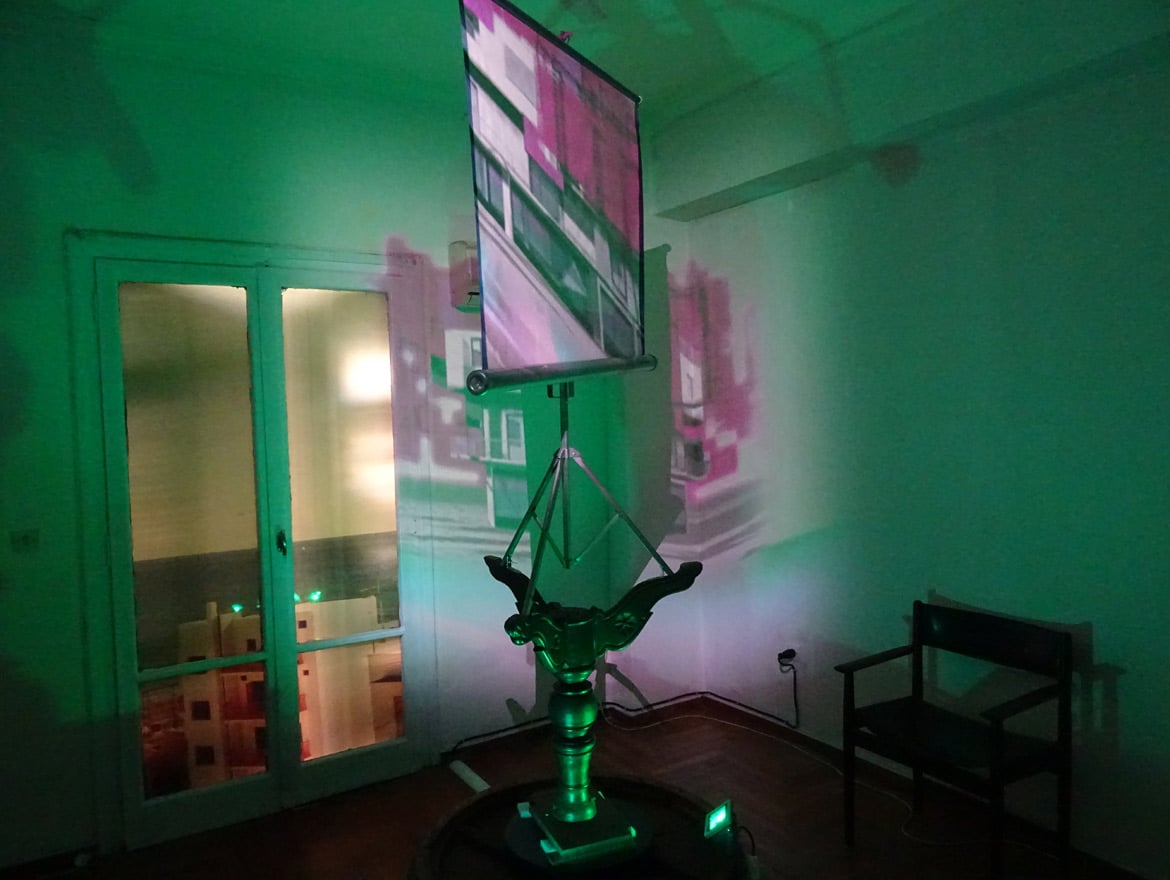
Georgia Sagri barst uit in twee dimensies
Georgia Sagri vooral bekend van haar performances, toont haar werk in een locatie in de nabijheid van de Politechnion, Tositsa 5. Ze toont werk dat is ontwikkeld in een wisselwerking tussen performances en sculpturaal werk. De beschikbare ruimte is tot barstens toe gevuld met tweedimensionale kleurrijke silhouetten van metaal.
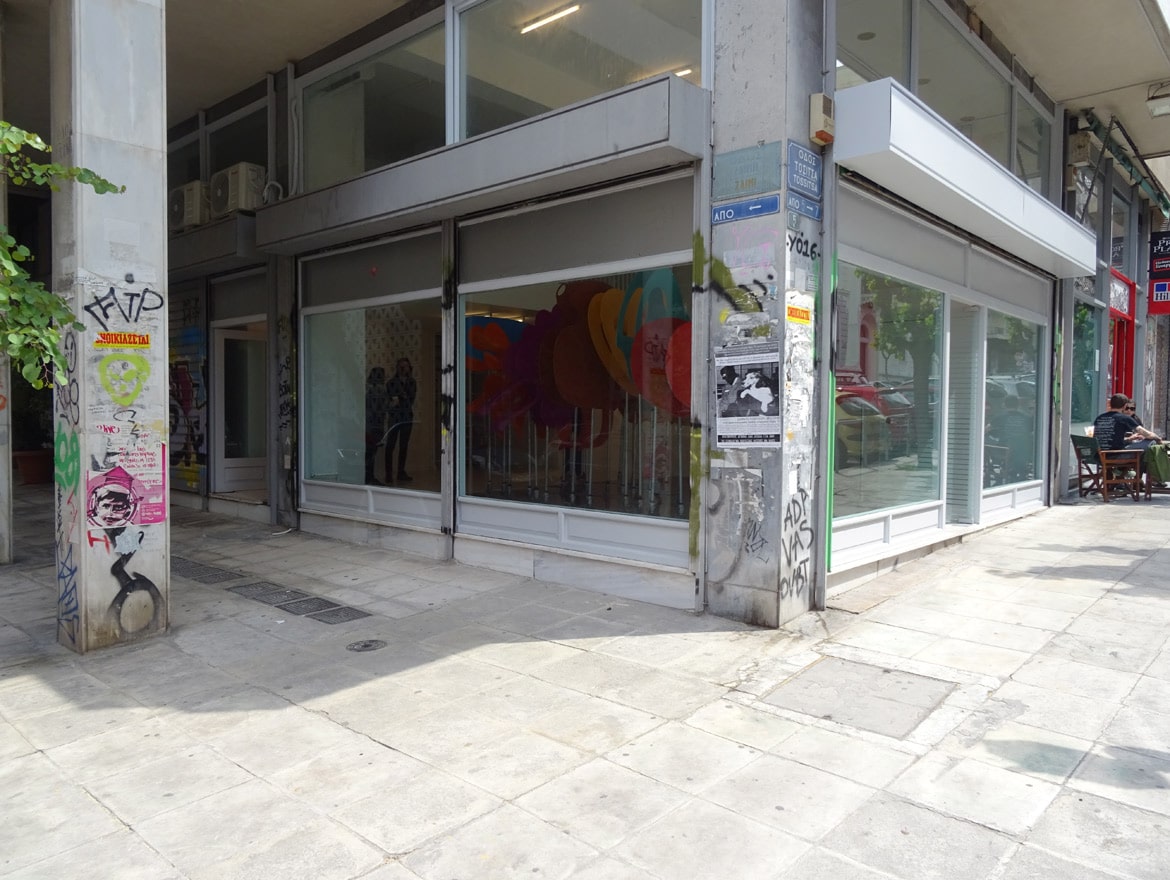

Geborduurd gluren
In het Museum voor Islamitische kunst zien we werk van Mounira Al Solh: Sperveri, 2017. Mounira Al Solh tekende getuigenissen op van Arabische migranten. In een tentvormige schuilplaats borduurde ze tevens beelden uit hun leven. De borduursels gaan terug op traditionele motieven. Motieven die door de verschillende bevolkingsgroepen worden gebruikt in zowel Libanon en Syrië als ook in Griekenland. Op de afgedekte tafel in het tentje liggen de canvas bladen met de in schrift geborduurde teksten. Een situatie waarbij je een zeker voyeurisme bekruipt, bij het lezen van de verhalen.
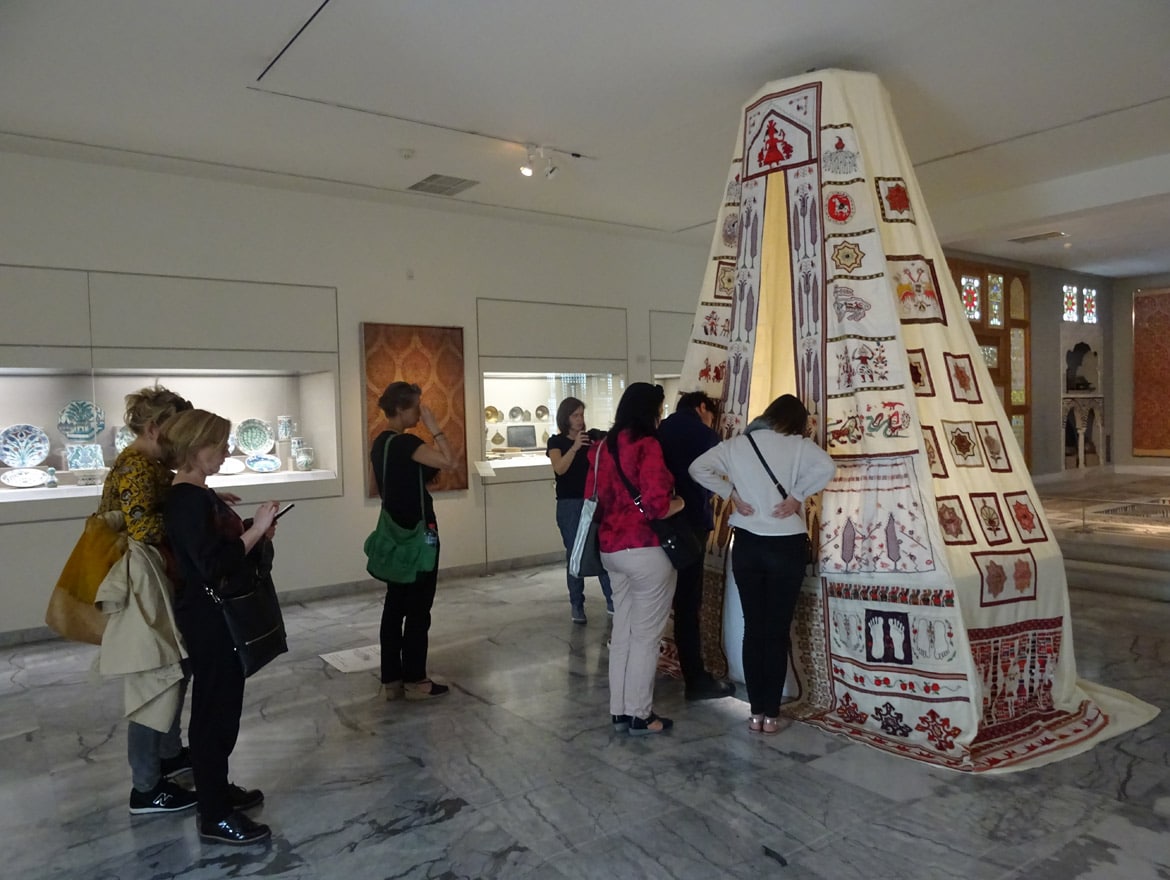
Stiekeme tegels
In een tweekanaals video-opstelling toont Dauciková je een ogenschijnlijk triviale, verglijdende blik langs de met tegels afgedekte gevels van residentiële gebouwen in Kiev, Keulen en Bratislava. Zoals de voice-over uitlegt werden de gevels betegeld om ze zo meer toonbaar te maken en op te waarderen: ‘making a face’. Het toont een historisch perspectief op de gevelontwerpen in post-stalinistische, West- en post-Sovjet-context. Het gaat ook over de onopgemerkte kunstenaar die tewerkgesteld is als tegelzetter. In de avonduren leest hij Schopenhauer. Stiekem werkt hij die inzichten overdag in de tegeltableaus.
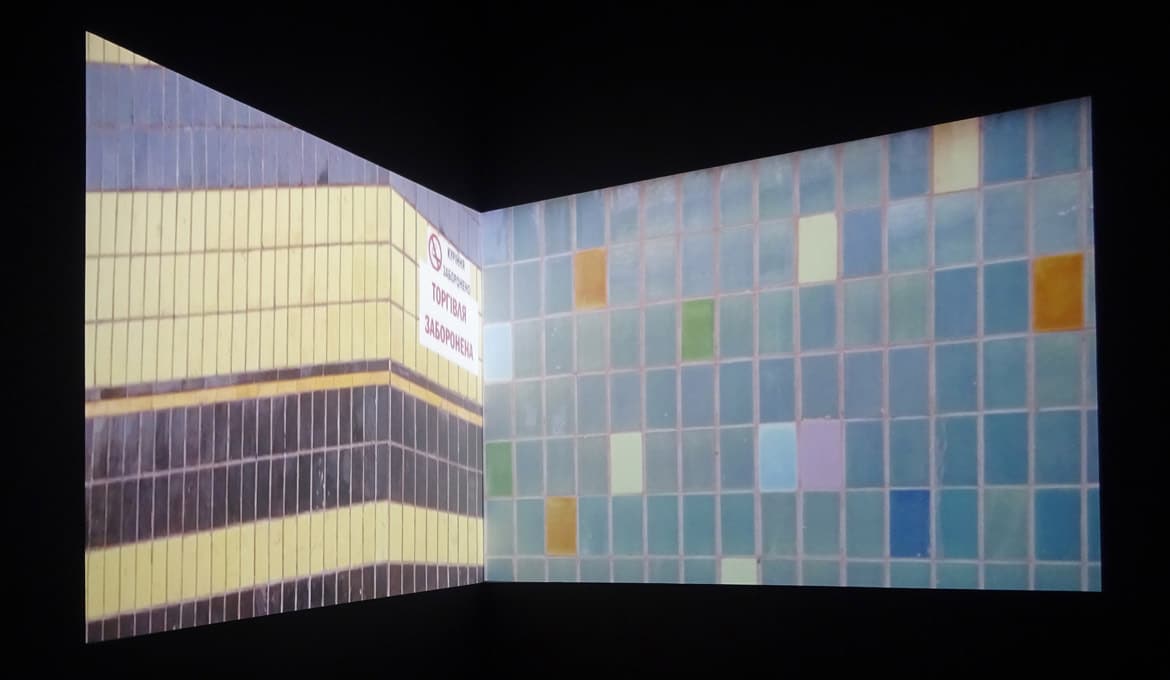
Muziek uit gewone meubels
Nevin Aladağ is van oorsprong opgeleid als driedimensionaal beeldend kunstenaar. Ze brengt in haar werk geluid, muziek en vorm samen. In de ‘sous sole’ van het Odeion heeft ze een muziekkamer ingericht met meubels die ‘gelijktijdig’ muziekinstrumenten zijn. Ze noemt dat Resonerende lichamen, de vorm die ons draagt, het geluid dat ons vormt.
Met geïmproviseerde jamsessies worden de muzikale meubels meerdere keren per dag tot leven gewekt. Zo komt de locatie op een andere manier tot leven. De muzikale toevoeging aan ogenschijnlijk doorsnee huishoudelijk meubilair is een verrassende ervaring. Iets wat je pas bij een tweede blik gewaar wordt.

Tegen de verandering
Edi Hill (1944) schildert sferische schilderijen. Hij is toonaangevend in de kunstscene van de Balkan. Zijn werk getuigt over de ingrijpende veranderingen die hij ervaart in de samenleving van postcommunistisch Europa. Hij weigert te emigreren naar een economisch welvarend land en is blijven wonen in Tirana. Daar werkt hij en reflecteert hij op de Albanese geschiedenis en de politiek-geografische ontwikkelingen tussen oost en west. Zijn werk reflecteert op de traditionele Albanese schilderkunst binnen de mediterrane kunstgeschiedenis.
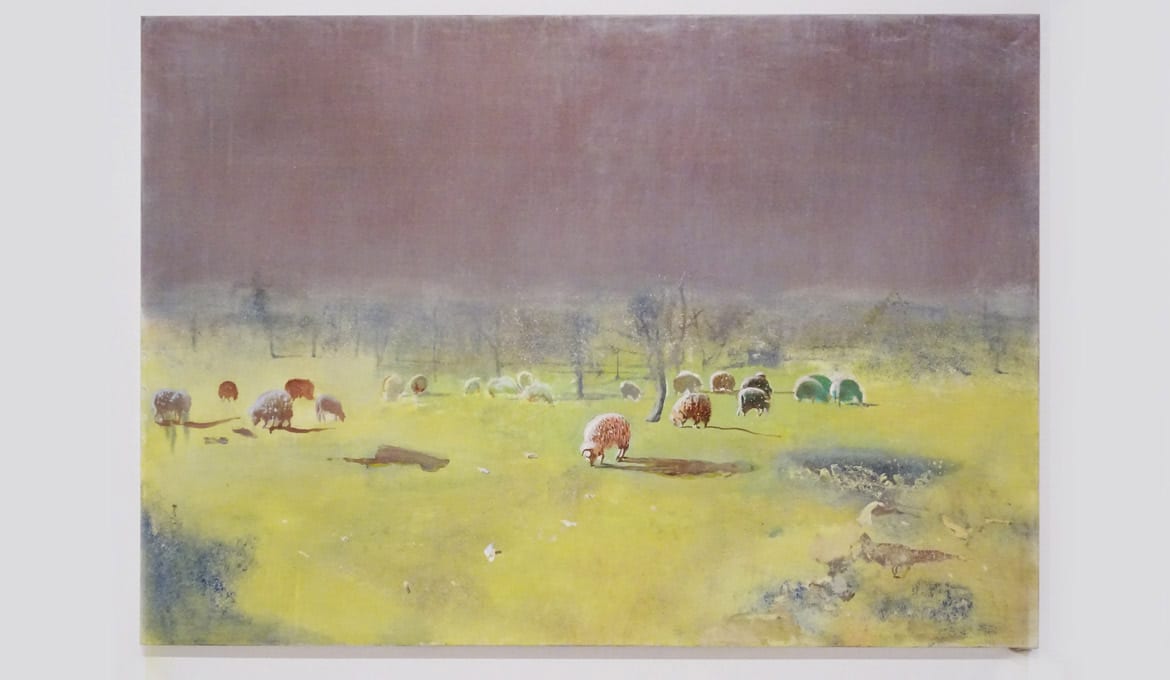
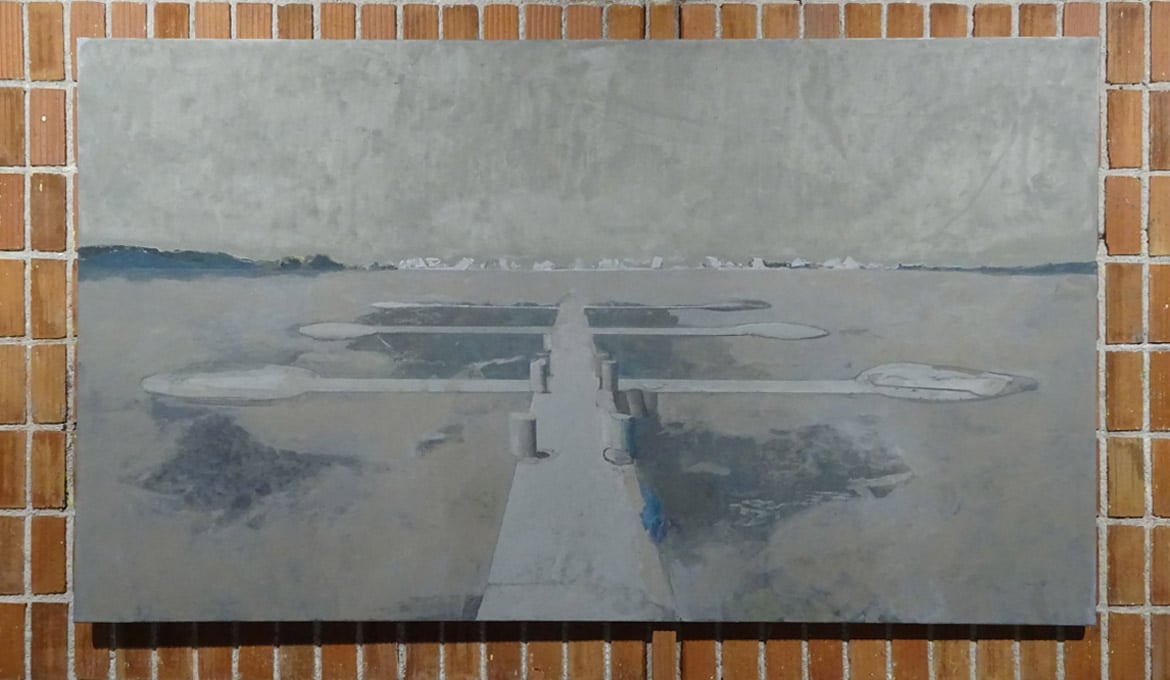
Woordenlijst tegen dictatuur
In het werk van García Andújar komen allerlei instrumentele structuren voor. Hij onderzoekt de ideologie van politieke utopieën. Hij beschouwt dat als een methodische oefening, als een manier om toegang tot de hardware van het systeem te krijgen. Om er vervolgens vraagtekens te plaatsen.
Voor zijn project in Documenta 14 ploos hij informatie na over de Griekse militaire dictatuur (1967-1974). Hij en creëerde een beeld-tekst woordenlijst van de fascistische grammatica LTI – Lingua Tertii Imperii (2016). Zijn doel was – net als in eerdere projecten – het dominante besturingssysteem bloot te leggen en zijn kwetsbaarheid te onthullen. Hij wil het hacken om kritische weerstand te mobiliseren, om de normaliserende werking van taal te decoderen en democratische krachten te mobiliseren.

Verontrustende beelden uit Berlijn en Calais
Glimpse (2016-17), van de hand van Artur Żmijewski, is een zwart-wit 16mm film zonder geluid. Het is gefilmd in de luchthaven Tempelhof in Berlijn en de Jungle in Calais en Parijs, Frankrijk. Het is een krachtige, zanderige, verontrustende film, waaronder een aantal ongemakkelijke, riskante momenten. Zo toont een scène het gezicht van een zwarte vluchteling dat wordt wit geschilderd. In een ander fragment overhandigt de kunstenaar een bezem aan een andere vluchteling. Daarmee lijkt hij hem aan te moedigen om zijn tijdelijke thuis, de Parijse straat, schoon te vegen.
De film probeert de brutaliteit van de ervaringen van vluchtelingen bloot te leggen en schakelt tussen erbarmelijke situaties. Enerzijds een begrijpende aanmoediging tot hulpverlening. Anderzijds manipuleert hij de nieuwkomers met mogelijk racistische handelingsmotieven.

Praktische informatie
Het werk van 163 kunstenaars worden in Athene gepresenteerd op 46 locaties. Het eerste deel van documenta 14 vindt plaats van 8 april tot en 16 juli 2017 in Athene. Vanaf 10 juni tot 17 september 2017 is het tweede deel in Kassel.

Een kaart met alle locaties vind je hier
Meer informatie over de documenta 14 vind je hier
Een beetje geschiedenis
De allereerste editie van Documenta werd georganiseerd door Arnold Bode en vond plaats in Kassel in 1955. Tien jaar na de Tweede wereldoorlog werd – zover naar het ijzeren gordijn als mogelijk was – een artistiek saluutschot afgegeven aan de nieuwe tijd. Met de focus op de wederopbouw van Kassel. Het statement van “vrijheid en viering van de autonomie van de kunst” veranderde het tien jaar eerder platgebombardeerde Kassel voor 100 dagen in een grootstedelijk totaalmuseum. Een museum dat de stand van de hedendaagse kunst documenteerde. Daarop volgend ontstond elke vijf jaar een nieuwe editie. Tot op de dag van vandaag, ook al staat de kalender nu vol met kunstevenementen, is er geen kunstmanifestatie die het belang van de Documenta evenaart.
De Documenta heeft naam gemaakt door de grote vrijheid die aan de samensteller van deze ‘super show’ voor hedendaagse kunst, wordt gegeven. Evenals voor het respect waarmee geselecteerde kunstenaars tegemoet worden getreden. Van enkele edities kan gerust worden gezegd, dat ze de kijk op de hedendaagse kunst totaal veranderd hebben.
